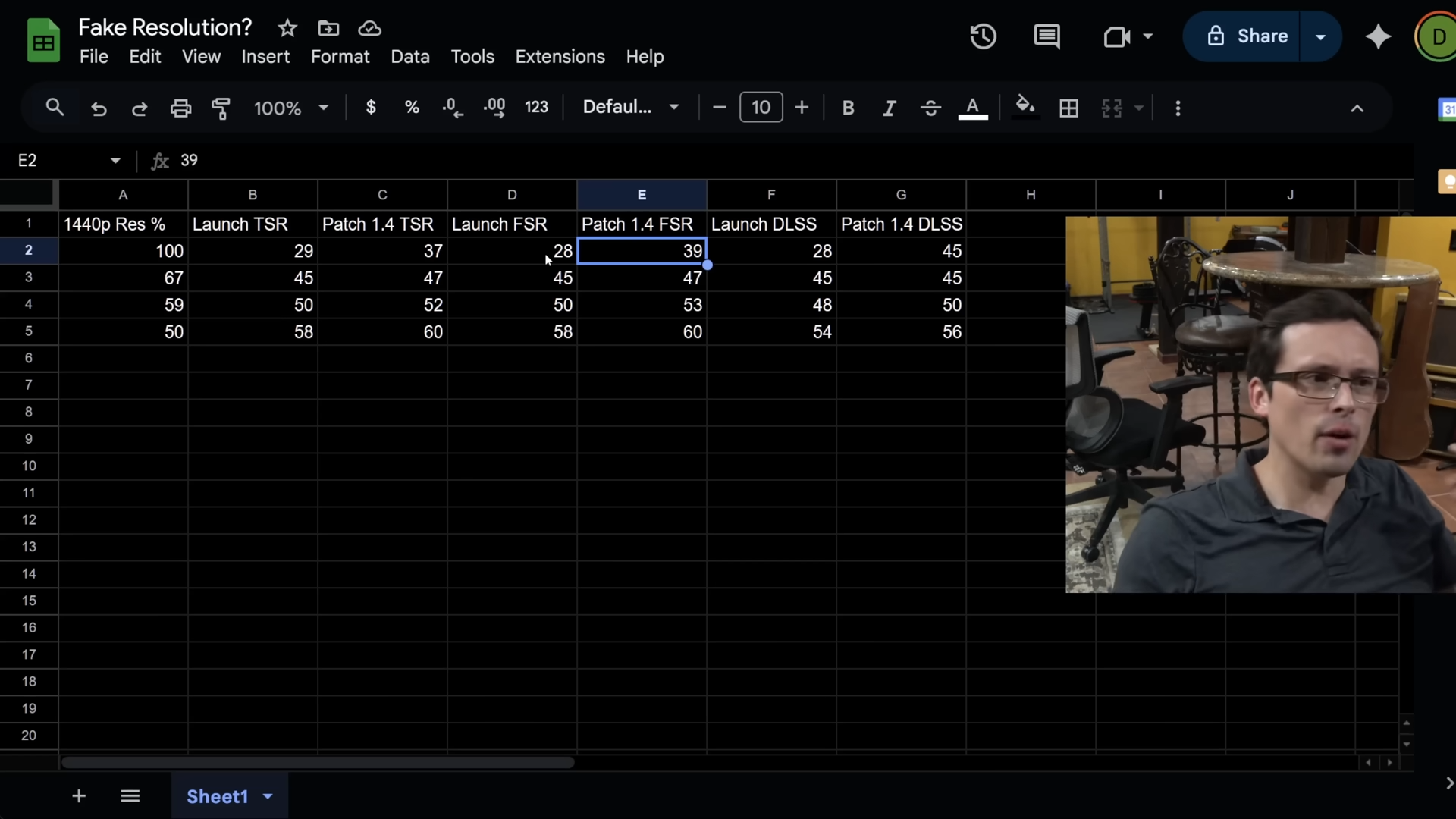Wuchang: Fallen Feathers has endured a rocky launch, with widespread reports of poor performance overshadowing its otherwise positive critical reception. Despite favorable reviews, subpar optimization has sparked significant furor among players. In response to the backlash, publisher 505 Games has rolled out a series of patches aimed at improving performance, something that’s become customary for modern AAA releases.
Unfortunately, in their rush to “fix” the Soulslike title, the developers may have crossed a line by misleading players about the game’s graphics settings. Acting on community reports, popular hardware analyst Daniel Owen tested the game’s performance, comparing the launch build with the latest 1.4 patch, only to discover that the internal rendering resolution is now clamped below native, even when the resolution scaling slider is set to 100%.

Watch On
For context, a game at 100% resolution scaling is supposed to render natively — meaning it outputs frames at the same resolution as your display without relying on upscalers like DLSS or FSR. Upscaling only comes into play when the internal resolution is lowered to gain performance, but in this case, the game is apparently using hidden upscaling while falsely reporting a native resolution.
Launch vs. patched performance
In his testing, Owen compared Wuchang: Fallen Feathers’ launch version with the 1.4 patch that just came out, using an RTX 3060 at 1440p Ultra settings. This distinction is important because lower-end GPUs are the ones that can show the discrepancy the best, as more peformant cards will simply produce more FPS from the get-go.
In the launch version, at 100% resolution scaling, TSR (Temporal Super Resolution) delivered 29 FPS, serving as the baseline for native performance. Lowering the scaling to 67%, 59%, and 50% progressively increased performance to 45 FPS, 50 FPS, and 58 FPS respectively, as would be normal for upscaling. These are modest improvements that make sense.
However, once the game was updated to patch 1.4, the results became quite suspicious. At 100% TSR, performance suddenly jumped from 29 FPS to 37 FPS — a 28% increase that far exceeds typical optimization gains from a minor patch. Meanwhile, at 67%, 59%, and 50% scaling, the performance boost was a modest 2–3 FPS, suggesting that the “native” 100% setting was no longer truly native.

The behavior with DLSS and FSR confirmed Owen’s suspicions. On the launch version, DLSS at 100% (labeled as “DLAA,” or native-resolution antialiasing) delivered 28 FPS, with predictable gains as the resolution was lowered. But on the 1.4 patch, DLSS at 100% suddenly matched the performance of DLSS Quality mode from the original build — roughly 45 FPS — even though the menu still displayed 100% resolution and told that DLAA was active.
Moreover, FSR showed similar behavior. At 100%, it reported 39 FPS post-patch, compared to 28 FPS at launch. Yet, again, the performance at 67%, 59%, and 50% scaling improved only slightly, pointing to a hidden resolution cap at what seems to be 80–85% of native resolution, even when players think they are running fully native.
|
Upscaler |
Scaling |
Launch FPS |
Patch 1.4 FPS |
Expected FPS |
Difference |
Notes |
|---|---|---|---|---|---|---|
|
TSR |
100% (Native) |
29 FPS |
37 FPS |
~31 FPS |
+8 FPS |
Not actually native res |
|
67% |
45 FPS |
47 FPS |
~47 FPS |
+2 FPS |
Normal scaling |
|
|
59% |
50 FPS |
52 FPS |
~52 FPS |
+2 FPS |
Normal scaling |
|
|
50% |
58 FPS |
60 FPS |
~60 FPS |
+2 FPS |
Normal scaling |
|
|
DLSS |
100% (DAA) |
28 FPS |
45 FPS |
~30 FPS |
+17 FPS |
Matches DLSS Quality, not native |
|
67% (Quality) |
43 FPS |
45 FPS |
~45 FPS |
+2 FPS |
Normal scaling |
|
|
59% (Balanced) |
48 FPS |
50 FPS |
~50 FPS |
+2 FPS |
Normal scaling |
|
|
50% (Perf.) |
54 FPS |
56 FPS |
~56 FPS |
+2 FPS |
Normal scaling |
|
|
FSR |
100% (Native) |
28 FPS |
39 FPS |
~30 FPS |
+11 FPS |
Likely not true native |
|
67% |
45 FPS |
47 FPS |
~47 FPS |
+2 FPS |
Normal scaling |
|
|
59% |
50 FPS |
53 FPS |
~52 FPS |
+3 FPS |
Normal scaling |
|
|
50% |
58 FPS |
60 FPS |
~60 FPS |
+2 FPS |
Normal scaling |
According to Owen, this behavior is a direct manipulation of the resolution scaling slider: “I’m absolutely not on board with a game lying about being at native rendering resolution. Players who have hardware powerful enough to run natively simply can’t anymore. It’s just making the game look worse.”
What’s more, patch notes for version 1.3 included a vague line about “adjustments to super sampling resolution limits on select GPU models,” which may have been a quiet attempt to hide this change. In reality, the update seems less like a performance optimization and more like a forced upscaling placebo to artificially boost frame rates.
While upscaling has become an industry standard — most modern games encourage using DLSS, FSR, or TSR for better performance, one would at least expect the game to run at native if they choose to do so. By clamping resolution and mislabeling settings, Wuchang: Fallen Feathers is going beyond just blatantly lying about the image quality, rather they’re robbing players of control over their graphics fidelity.
Hahaha this game is the gift that keeps on giving. After people ceaselessly complained about bad perf, the dev patched it so that the internal resolution slider in the gfx settings never gets to 100%, despite setting it to 100%. Thankfully AMDaniel Owen caught them red-handed. https://t.co/QSzCWFMc2D pic.twitter.com/0SPw2c7NeIJuly 26, 2025
For players, this means the game looks softer or more pixelated even when maxed out. What’s funny is that there is a clear 2-3 FPS improvement with the optimization patch at non-native scaling, meaning that actual work has been done to extract more juice out of the game. But instead of laser-focusing on that, the devs took a strange shortcut and shot themselves in the foot.
This discovery is likely to cause further backlash unless 505 Games issues a statement or reverts these changes. As the host pointed out, the difference between launch and patched builds suggests that the “performance improvements” were mostly achieved by lowering visual quality… without telling the players.
Until then, users with sharp eyes (and sharp GPUs) may find Wuchang: Fallen Feathers looking worse than ever, despite what the settings menu claims.
Follow Tom’s Hardware on Google News to get our up-to-date news, analysis, and reviews in your feeds. Make sure to click the Follow button.






